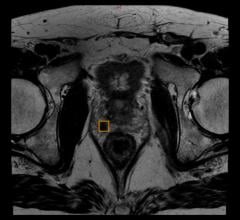October 21, 2013 — Jefferson Medical College researchers have developed a hologram-like display of a patient’s organs that surgeons can use to plan surgery. This approach uses molecular positron emission tomography (PET)/computed tomography (CT) images of a patient to rapidly create a 3-D image of that patient so surgeons can see the detailed anatomical structure, peel away layers of tissue and move around in space to see all sides of a tumor before entering the operating room (OR) to excise it.
"Our technology presents PET/CT data in an intuitive manner to help physicians make critical decisions during surgical planning," said Matthew Wampole, Ph.D. and lead author, department of biochemistry and molecular biology, Jefferson Medical.
The researchers produced a surgical simulation of human pancreatic cancer reconstructed from a patient’s PET scans and contrast-enhanced CT scans. Six Jefferson Medical surgeons evaluated the 3-D model for accuracy, usefulness and applicability of the model to actual surgical experience.
The surgeons reported that the 3-D imaging technique would help in planning an operation. Furthermore, they indicated that the 3-D image would be most useful if it were accessible in the OR during surgery. The 3-D image is designed to speed the excision of malignant tissue, avoiding bleeding from unusually placed arteries or veins, according to the report published September 24 in Plos One.
The 3-D image promises to eliminate complications frequently presented during surgery due to unexpected anatomical complexity. A sense of touch and feel will be added with haptic manipulators to the 3-D visual image during the next step of development. This will provide a realistic environment to clearly understand an individual patient’s anatomy and pathology and to accurately plan and rehearse that patient’s operation.
For more information: www.jefferson.edu


 July 02, 2024
July 02, 2024 








